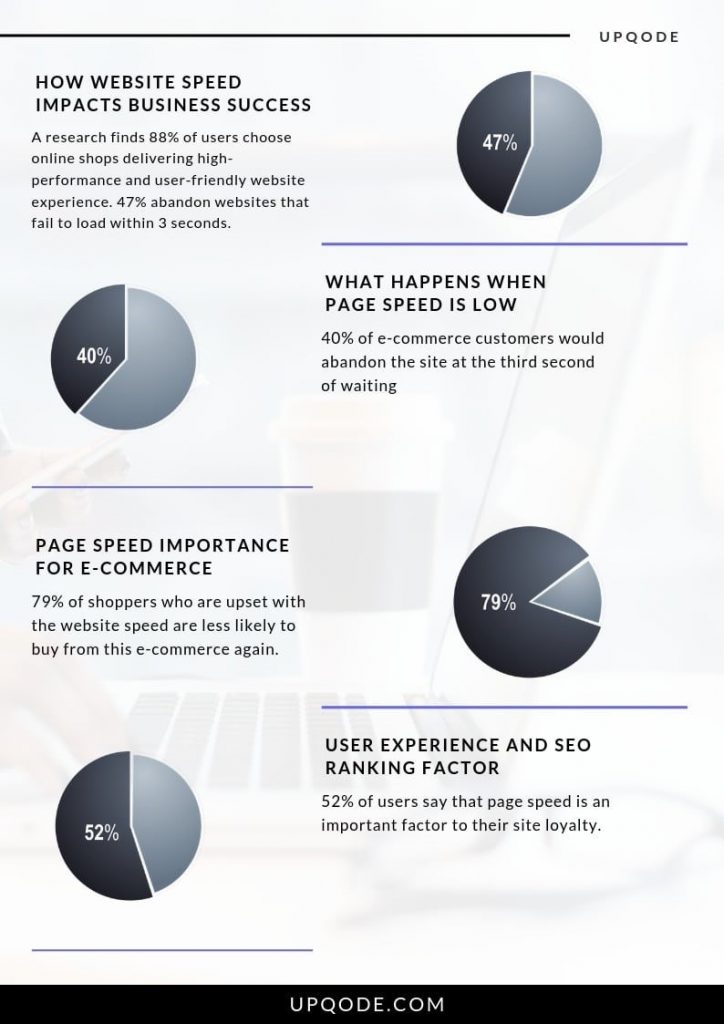The Best Strategy To Use For Website Page Speed
Table of ContentsWebsite Page Speed Can Be Fun For AnyoneWebsite Page Speed - The FactsThe Only Guide for Website Page SpeedSome Ideas on Website Page Speed You Should Know
Latency is the quantity of time it takes for a package of data to get from one factor to one more. There is latency between the time it takes a host web server to get and also process a demand, and latency between the web server sending a possession back and a web browser obtaining it.

On a regular USA desktop computer making use of Wi, Fi, a request's average big salami takes just 50 milliseconds. This is the moment it considers an internet browser to send out a request and the web server to send out an action over the network. On a mobile network, round-trip time can be even more than 300 milliseconds.
Add the round-trip time for each demand it takes to load your website for time it takes to originally develop a radio channel with the network (possibly 1,000 to 2,000 nanoseconds), and you can see how mobile network efficiency directly influences your website's user experience. Further, it's tough to anticipate when wireless networks might be unreliable as a result of aspects like an individual going to a congested event or in a location with poor function.
6 Easy Facts About Website Page Speed Explained
This is evidenced by a number of companies' researches. My team at Etsy located a boosted bounce rate of 12% on mobile gadgets when we included 160 KB of surprise pictures to a web page. Dual, Click, a Google ad product, got rid of one client-side redirect and saw a 12% boost in click-through price on mobile devices.
Your website's customer experience will certainly be impacted by page load time, despite the kind of device used to access it. An unfavorable user experience due to slow down tons times will be worsened if your individual is on a mobile gadget, thanks to poorer network rates as well as the various behaviors that mobile individuals show.
Desktops, on the other hand, are utilized for even more serious or research-intensive tasks. According to the research, mobile phones are the most usual starting location for the following online tasks: Searching for details details Browsing Shopping Social networking As you design a website, take into consideration exactly how quickly users will certainly be able to finish jobs like these given the amount of time they plan to invest in their gadget in this sitting, as well as how substantially their mobile network might impact their capacity to do so.
Your design ought to be instinctive and easy to make use of, and it needs to likewise end up being interactive as swiftly as feasible, regardless of the platform. Furthermore, even when using Wi, Fi on a phone, the user will likely have a slower experience as a result of antenna size as well as result power. Wi, Fi can take advantage of even more than one antenna at once to send and get signals; however, most mobile phones aren't configured to make use of the multipath technology.
Everything about Website Page Speed
Mobile phones additionally try to be effective with battery power (which is a big part of the smartphone user experience), and one way for them to preserve power is by restricting the output of their radio. Desktops do not work on battery power, so they have the ability click to utilize Wi, Fi without making the same alterations to Wi, Fi stamina.
Many of the optimizations that enhance web page lots time likewise improve gadget power usage, further improving the individual experience. Things like Wi, Fi signal stamina, Java, Manuscript making, as well as rendering of images all effect battery drainpipe on mobile tools. The lower line is that your efforts to optimize your site have a result on the entire experience for your individuals, including battery life.
Website Page Speed - The Facts
You may focus on optimizing layout and also format, however those can come at the expense of page rate. Some responsively made websites are reckless with the amount of markup and images made use of to reformat a website for smaller display dimensions; they can unconsciously force their customers to download and install unnecessary resources.
Just how lots of images did you make use of? How huge were the picture documents, as well as what file styles did you use? The choices made by developers are what normally drive the rest additional hints of exactly how an internet site is constructed.
To illustrate this, let's claim we have an instance logo design that we are intending to overlay on a div with a light blue background, as received Number 1-3. Figure 1-3. This example logo design has a transparent history, and will be superimposed on a div with a light blue background.
Comments on “The Main Principles Of Website Page Speed”